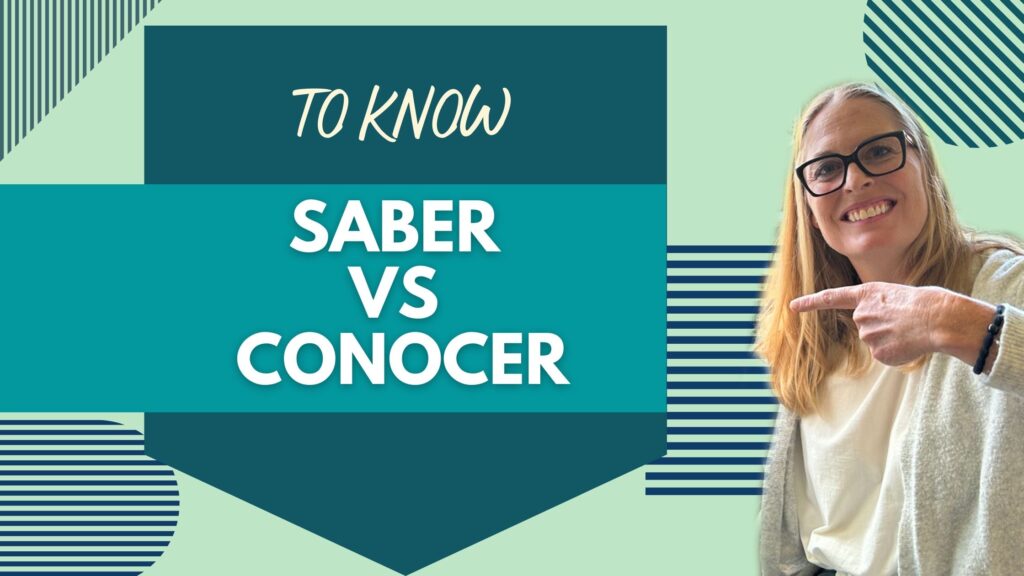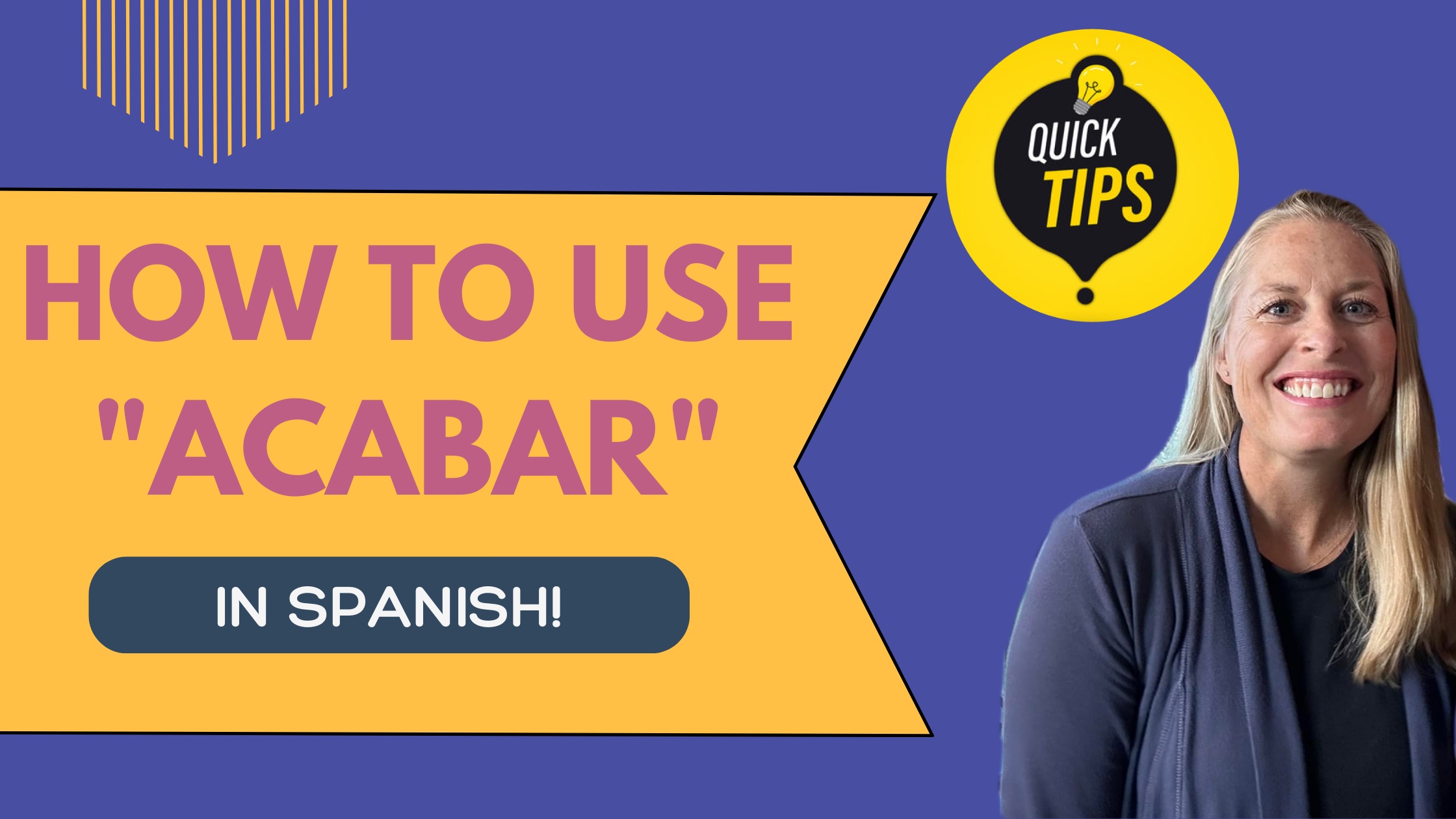You know your student needs Spanish help – but you’re not quite sure how to help them….What can you do?
Helping your student be successful in Spanish class is just like anything else, there are probably things you can do as a parent (or student) to improve before you look for formal Spanish help. Keep reading for 4 strategies that are proven to help your student learn Spanish:
Spanish Help Strategy 1: Emphasize the benefits of learning Spanish –
“Why do I have to learn this?!” is every teen’s favorite question. Most teenagers have to understand the motivation to work hard at something. Perspective is key, so remind your student of what they stand to gain by taking a Spanish class. Spanish is a practical skill, and it’s exponentially more useful that just ordering a burrito in Spanish at your favorite Mexican restaurant.
Learning to speak Spanish in today’s economy has a multitude of benefits including (but not limited to):
- Future employment advantage in competitive markets:
- Improved test scores in seemingly unrelated areas (like math and science):
- Improved understanding of your own native language:
- Brain health including slower decline in mental powers with age:
- Exciting travel opportunities:
- Cultural savvy:
And the list goes on! The first step when looking for Spanish help is to help your student to understand these benefits of speaking Spanish. When class gets difficult, gently remind them of what they stand to gain from their hard work.
Spanish Help Strategy 2: Encourage practice –
Learning Spanish is an endeavor that will require time spent outside of the classroom. Daily practice is ideal, but the general rule of thumb is that the more frequently your student practices Spanish, the better it will stick. Your student may not be accustomed to this level of dedication, especially in high school – but it works! The time spent doesn’t have to be long hours each night. Even 15 -20 minutes spent practicing vocabulary and reviewing class notes will go a long way.
If a parent or friend is available and willing, offer to help review Spanish vocabulary words with them. You don’t need to be able to speak Spanish to help quiz them on some flashcards. You can even keep a set by the television and make them quiz themselves during the commercials of their favorite show.
In today’s digital world, there are also a plethora of Spanish apps that students can use on their devices for easy Spanish help. There are so many available that students can find help in all areas including: vocabulary, dictionaries, grammar, listening and writing tips. High School Spanish is an iOS app we built for convenient and relevant Spanish help – check it out!
Spanish Help Strategy 3: Partner with your child’s teacher –
Every teacher wants their students to be successful and probably has some study ideas that you may not have thought of. Make an appointment with your student’s Spanish teacher at a time that is convenient for them & go in with “all ears”. Listen closely to what your teacher says, and if your student needs to give class more effort – make sure you reinforce that to your student. Your child’s Spanish teacher has the inside scoop on what your student needs, and if they don’t, the simple act of you making an appointment will get them paying some more specific attention to your student. In general, teachers are teeming with resources they’d love to share with you so your student can get the Spanish help s/he needs!
Attend Back-To-School night and get more information about how the teacher likes to run his/her class. Ask for suggestions as to how you can help your student. Many even keep a website for their classes with useful links and study tips.
If your child starts to struggle in their Spanish class, reach out to their teacher with a solutions-based approach. All teachers hate the angry “Why is my son/daughter failing your class?!?” email. Teachers tend to respond better to something more like I noticed my student is still struggling in Spanish class, what can I do to help at home? Teachers are people too, and treating them humanely is usually a good idea! This approach lets your child & his/her teacher know that you are looking for a partnership, you’re not playing the blame game, and that everyone is on the same team working toward the same goal.
Your child’s teacher will definitely have some ideas for you; and may enlighten you about what is going on in class that your student isn’t sharing with you. It’s natural, many students are not always eager to admit that they haven’t been pulling their weight in class; but the solution is for everyone to work a little harder so that your student gets the Spanish help s/he needs.
Spanish Help Strategy 4: Seek cultural opportunities to supplement the rigor of the classroom –
Eventually your student’s brain will be so filled with vocabulary words and grammar rules that the initial excitement of a Spanish class may start to fade. You can help keep your student’s interest by seeking fun cultural enrichment opportunities to break up the monotony and to add some real life language practice.
Look for events & places within your community to expose your child to some Spanish culture. Here are some ideas:
- Find a Hispanic charity you can volunteer with
- Search for a Peruvian/Colombian/Spanish restaurant to try some new foods – UrbanSpoon, TripAdvisor, Yelp & and OpenTable are usually good listing sites for seeking new restaurants
- Research the food habits in Spanish speaking countries. Pick a new recipe to try every month from a different country, the possibilities are endless
- Research a potential travel location together – maybe a spring break trip in your future?
- Download some new music in Spanish in your favorite genre
- Take a salsa dancing class, many restaurants offer salsa night with walk-in lessons
At the end of the day, language is a tool for communication – not just another subject to “learn”. If you can spark that interest in your student and encourage them to move beyond learning about Spanish to actually getting comfortable speaking Spanish – that will be the best Spanish help you can give your student in the long run.
Of course, if the strategies above aren’t enough to help your student succeed in his/her Spanish class, we’d be more than happy to help with some 1:1 Spanish tutoring which can be done online or face to face – whatever works best for your lifestyle and your budget!
Contact Us if you need Spanish help; we’ll be happy to help you be more successful in your Spanish class.
Keep up the good work speaking responsible Spanish to your patients! Check out our other books, classes & products to help you !




